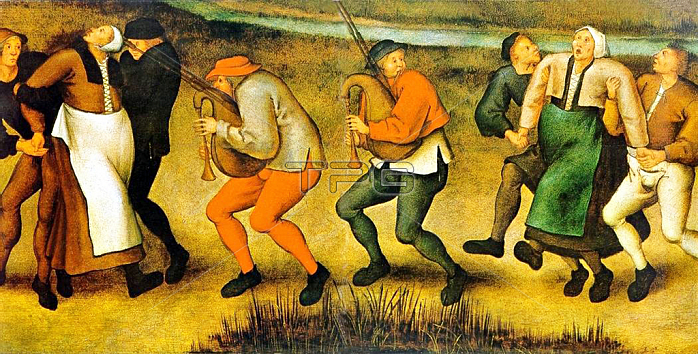
2966054 Netherlands / Holland: A depiction of dancing mania, on the pilgrimage of epileptics to the church at Molenbeek. A painting by Pieter Brueghel the Younger (1564-1638), after drawings by his father Pieter Breughel the Elder by Brueghel, Pieter the Younger (c.1564-1638); (add.info.: Dancing mania (also known as dancing plague, choreomania, St John\'s Dance and, historically, St. Vitus\' Dance) was a social phenomenon that occurred primarily in mainland Europe between the 14th and 17th centuries. It involved groups of people dancing erratically, sometimes thousands at a time. The mania affected men, women, and children, who danced until they collapsed from exhaustion. One of the first major outbreaks was in Aachen, Germany, in 1374, and it quickly spread throughout Europe; one particularly notable outbreak occurred in Strasbourg in 1518, France. Affecting thousands of people across several centuries, dancing mania was not an isolated event, and was well documented in contemporary reports. It was nevertheless poorly understood, and remedies were based on guesswork. Generally, musicians accompanied dancers, to help ward off the mania, but this tactic sometimes backfired by encouraging more to join in. There is no consensus among modern-day scholars as to the cause of dancing mania.); Pictures from History; Flemish, out of copyright.
| px | px | dpi | = | cm | x | cm | = | MB |
Details
Creative#:
TOP27505855
Source:
達志影像
Authorization Type:
RM
Release Information:
須由TPG 完整授權
Model Release:
No
Property Release:
No
Right to Privacy:
No
Same folder images:

 Loading
Loading